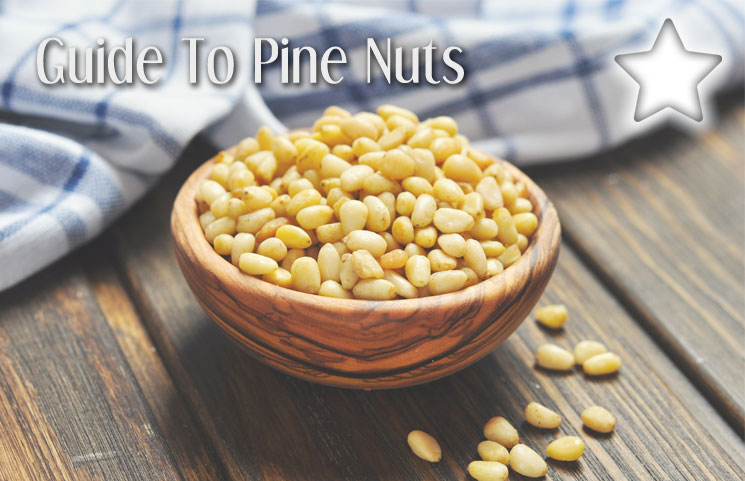You’ve heard of pine nuts, right? You may have had these small nuts served to you as part of a salad, or perhaps you’ve had a handful of them as a small snack. But what are they really? Where do they come from? And what’s the big deal about such a tiny nut?
Now is the time to find out! Let’s talk about these tiny nuts and find out where they come from and just how you could benefit from adding them to your diet!
What are Pine Nuts?
Though its name is quite obvious, many people don’t realize that pine nuts come from pine trees. There are roughly twenty kinds of pine trees that will produce pine nuts. These pines can be found in Europe, Asia, and North America. And like most other nuts and seeds, only the best and largest pine nuts are harvested. You only want the best quality and the best tasting pine nuts, right?
That is the goal of the harvesters: to find the consumers the best pine nuts to meet their needs. No one wants to add tiny pine nuts to their salad, they’ll just get lost.
Harvesters of pine nuts must wait a certain amount of time before they can begin harvesting. The wait times vary from species to species, some taking a few months between Spring and Fall, and others taking as long as 36 months to completely grow. This also ensures that they are getting the largest pine nuts that they can produce.
Once they have completed the growing process, the harvest begins. Most harvesters complete this in relatively the same fashion. Burlap sacks are used to collect the pine cones from the trees and are also used to dry out the pine cones.
The reason for the drying process is so that the pine cones can open on their own, making the seeds easier to get to.
Most harvesters use the sun as their main heat source for opening the pine cones. Using this method, it takes anywhere from 15 days up to one month before the drying process is completed. This is the most natural method for releasing the pine nuts, allowing them to keep their more natural flavor.
Another way to open the pine cones is to tie up the burlap bag and strike it against another surface, forcing the pine cones to open. This is a quicker method of achieving the fruition of their harvest.
Some harvesters also choose to wait until the pine cones have dried out in the sun while still attached to the trees. This will then allow the pine nuts to fall from the trees where they can be captured on the ground in buckets.
Again, this is something that will take more time as the sun will be the only source of heat to allow the pine cones to open.
Storing Pine Nuts
When it comes to eating pine nuts, there are many factors to consider before you bite into one. The first is how to store your pine nuts once you have brought them home from the supermarket.
Most pine nuts are sold still in their shells, similar to how you see pistachios.
These shells are inedible, but they do an excellent job of keeping the nuts in good eating condition if they are stored properly. Storing shelled pine nuts in a dry, refrigerated place will give them a long shelf life and keep them from going rancid before you can use them. This is also great for buying pine nuts in bulk for many uses over the few months after purchase. You can also freeze them if you do intend to buy in bulk, which will keep them from going rancid and also help them to preserve their flavor.
Rancid pine nuts are more common than you may think, due in large part to the fact that consumers are unsure of how to store them. Taking the time to do extra research on storage for your pine nuts is worth it in the end for a great tasting nut.
Pine nuts will go rancid very quickly, especially if they are kept in a place that is humid and wet. This is not limited to just the unshelled nut. Shelled pine nuts will also go rancid in warm and humid conditions. This process could take as long as a few weeks, but most will go bad in only a few days.
So it is important to make sure that you have properly stored your pine nuts before you use them, especially if it will be a while before you cook with them.
Cooking with Pine Nuts
After learning what pine nuts are and how to store them properly, you are now ready to cook with pine nuts. The reason most people choose pine nuts in their diet is because they offer a good source of protein.
Most pine nuts contain anywhere from 10% to 40% of protein per serving, which is great for people who may not be getting protein through meat.
But what can you use pine nuts in?
Pine nuts are a great addition to salads as a topping for some extra crunch. They can be baked into bread for a savory treat, and are wonderful by themselves after they have been roasted in a sauté pan with a little salt.
Sautéing pine nuts in a dry pan helps release their natural oils and allows them to flavor themselves without you having to add anything to them.
Pine nuts are also a great ingredient in any pesto sauce. They are ground up with the other pesto ingredients and add a natural nutty flavor.
They are also great in Middle Eastern cuisine, as they hold their own flavor very well when mixed with spicy foods. In New Mexico, you will find pine nuts used in a coffee form. Grinding them with regular coffee beans gives a bold, rich flavor, allowing you a new coffee experience.
Used correctly, there can be endless uses for the small pine nut. From a simple snack in the afternoon to a coffee experience like no other for breakfast, pine nuts are becoming more popular ever day.









